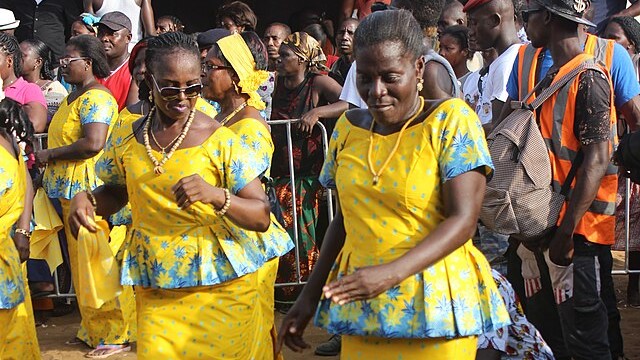In the villages of Côte d’Ivoire, dusk often arrives to the sound of drums. The low thrum of the djembe, the ringing notes of the balafon, and the liquid tones of the kora rise into the evening air, summoning dancers and onlookers alike. These gatherings—sometimes part of festivals, sometimes woven into the fabric of daily life—form the pulse of the country’s living heritage.
Music and dance here are more than performance; they are vehicles for memory. The rhythms trace agricultural seasons, rites of passage, and moments of communal decision-making. Each pattern on the drum, each step in a dance, holds layers of meaning recognizable to those who have grown up in the tradition.
Styles shift across Côte d’Ivoire’s more than 60 ethnic groups. Among the Agni, the spirited Zaouli dance features rapid, precise footwork, its performers often wearing intricately carved masks that mirror the agility of forest animals. The Gouro’s Goli dance, accompanied by hypnotic drumbeats, honors ancestors and marks significant community events, blending reverence with celebration. In both cases, movement becomes a language—one that speaks of belonging, continuity, and shared history.
Festivals remain the most visible showcase for this cultural wealth. The Yamoussoukro Festival draws thousands each year with its sweeping parade of music, dance, and costumed performers. In Bouaké, the annual festival turns the city’s streets into a stage where troupes from across the country converge, their performances both preserving and reinventing tradition for new generations.
Storytelling is never far from the stage. Dancers may embody characters from folktales, while musicians weave historical narratives between songs. These performances carry moral lessons and collective memory, linking the present to a long line of ancestors whose voices still echo in the rhythm.
In a rapidly modernizing nation, these sacred rhythms and dances remain an anchor. They are taught to children not in classrooms, but in courtyards and open fields, passed down with the same care as one might pass down land or a family name. They are acts of cultural stewardship as much as art.
In Côte d’Ivoire, to hear the drums at night is to be reminded of the country’s deep reserves of continuity and resilience—a heritage not preserved behind glass, but alive, moving, and shared.
Sources:
- UNESCO Intangible Cultural Heritage, Zaouli Mask Dance of the Guro People, 2017.
- Ministère de la Culture et de la Francophonie de Côte d’Ivoire, Festivals et Traditions, 2023.
- BBC Africa, The Cultural Power of Music and Dance in West Africa, 2022.


